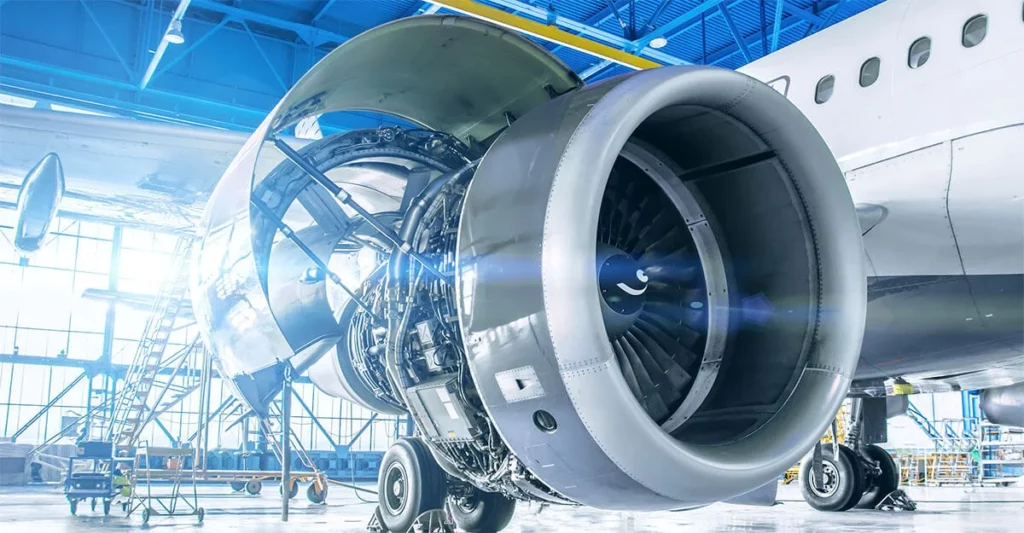Scotland’s aerospace industry is undergoing a major shift. At the heart of that transformation is CNC machining — a technology that’s helping manufacturers meet new demands for speed, accuracy, and lightweight design. From engine components to structural parts, aerospace CNC machines are now central to how aerospace firms across Scotland design, build, and improve aircraft systems.
As global demand grows for more efficient, high-performance aircraft, CNC machining is enabling Scottish companies to produce complex parts faster, with greater accuracy, and using advanced materials. It’s not just improving what’s possible — it’s changing how things get done.
What Is CNC Machining and Why Does It Matter?
CNC (Computer Numerical Control) machining automates the process of cutting and shaping parts from metal, plastic, or composite materials. A programmer uploads precise digital instructions, and the machine does the rest — milling, drilling, turning, or grinding the part to exact measurements.
In aerospace, where tolerances are tight and safety is critical, CNC is essential. It allows companies to make parts that fit perfectly, weigh less, and hold up under extreme conditions — all while reducing waste and human error.
How CNC Aerospace Machines Are Used Across Scotland
1. Turbine and Jet Engine Components
Manufacturers in Scotland are using aerospace CNC machines to produce parts like turbine blades, fuel nozzles, and engine casings. These components operate in extreme environments, so they must be machined with high precision using materials like titanium and Inconel.
2. Aircraft Structures and Frames
CNC machining allows for the efficient production of lightweight aluminium and composite components that form the aircraft’s skeleton — including fuselage panels, wing spars, and brackets. These parts need to be strong without adding unnecessary weight, which CNC machining handles with ease.
3. Avionics and Electronic Housings
CNC machines are ideal for creating compact, high-precision enclosures that protect sensitive avionics and navigation systems. With 5-axis machining, complex internal geometries and heat-dissipating designs can be produced without compromise.
4. Cabin Interiors and Aerodynamic Details
Interior trim panels, seating supports, and exterior fairings are all crafted with CNC precision. The process helps balance form and function, allowing engineers to optimise both aesthetics and aerodynamics while using durable, lightweight materials.
5. Rapid Prototyping and Custom Projects
Scotland’s aerospace sector is seeing a rise in electric aircraft and unmanned systems. CNC machining supports fast prototyping of new designs, allowing engineers to test, tweak, and perfect components without waiting weeks for tooling or casting.
The Growth of CNC Aerospace Manufacturing in Scotland
Leading Facilities and Regional Strength
Prestwick, Renfrewshire, and Glasgow are hubs for CNC aerospace Scotland activity. Global companies like Rolls-Royce and Spirit AeroSystems operate advanced machining centres, while smaller, specialised manufacturers contribute through precision subcontracting.
This cluster of talent, combined with access to renewable energy and excellent transport links, makes Scotland an increasingly attractive location for aerospace innovation.
Support from Government and Universities
Programmes like the National Manufacturing Institute Scotland (NMIS) are helping to develop next-generation manufacturing talent, including CNC programmers and operators. Scottish universities are also collaborating with industry partners to improve CNC processes, machine learning integration, and material research.
Why CNC Machining Is a Game-Changer for Aerospace
High Accuracy Every Time
Aircraft parts must meet extremely tight tolerances — often within a few microns. CNC machines hit those numbers consistently, batch after batch, with no loss in quality.
Complex Shapes, Made Simple
Modern aerospace parts often have internal channels, compound curves, or undercuts that would be impossible to produce by hand. Multi-axis CNC machines can cut these shapes cleanly and in fewer setups.
Works With Tough, High-Performance Materials
From heat-resistant superalloys to carbon fibre composites, CNC machines are built to handle materials that traditional tools struggle with. These materials are key to building lighter, stronger aircraft.
Faster Production and Lower Waste
CNC machining speeds up production by eliminating manual processes and reducing errors. It also cuts down on material waste — especially important when working with expensive aerospace-grade metals.
Materials Commonly Used in Aerospace CNC Machines
Scottish aerospace firms typically machine:
- Titanium – lightweight, corrosion-resistant, and heat-tolerant, ideal for jet engines and structural supports.
- Aluminium alloys – perfect for lightweight airframe parts.
- Inconel and other nickel-based alloys – used in high-stress, high-temperature environments.
- Carbon-fibre composites – machined post-cure for aerodynamic components and cabin interiors.
- PEEK, Ultem, and other engineering plastics – often used in non-structural applications where weight and insulation matter.
5-Axis CNC: A New Standard in Aerospace Manufacturing
5-axis CNC machines allow the cutting tool to move along five directions, making it easier to produce highly complex parts in one go. This not only reduces production time but also improves the surface finish and structural integrity of the component.
For aerospace applications, where weight, aerodynamics, and strength all matter, 5-axis machining is becoming the new normal.
Scotland’s Role in Sustainable Aerospace Manufacturing
CNC machining isn’t just about precision — it also supports sustainability:
- Less Material Waste: CNC uses only what’s needed to produce the part.
- Lightweight Parts: Lighter aircraft use less fuel.
- Energy-Efficient Processes: Newer CNC machines are designed for low power consumption and optimal tool life.
Scotland’s aerospace sector is working toward net-zero targets, and CNC technology plays a key role in helping companies meet both environmental goals and performance standards.
Final Thoughts
CNC machining isn’t just supporting aerospace in Scotland — it’s redefining it. Whether it’s making stronger engine parts, faster prototypes, or more sustainable aircraft components, CNC technology is driving innovation from the ground up.
For manufacturers looking to stay ahead, investing in aerospace CNC machines and building expertise around CNC aerospace in Scotland isn’t just a smart move — it’s essential.If you’re looking for a reliable partner to support your next high-precision aerospace project, Aeron Automation offers the expertise, technology, and quality assurance to help you get there. With decades of experience and a commitment to excellence, we’re ready to turn your most complex designs into reality.
